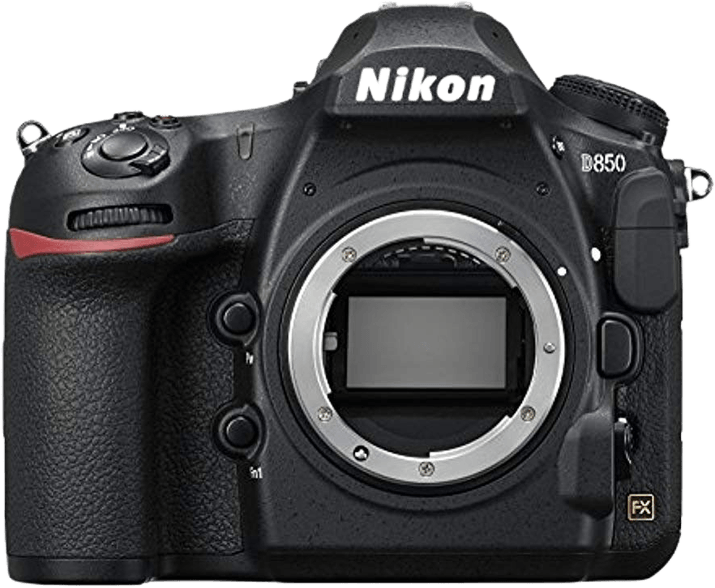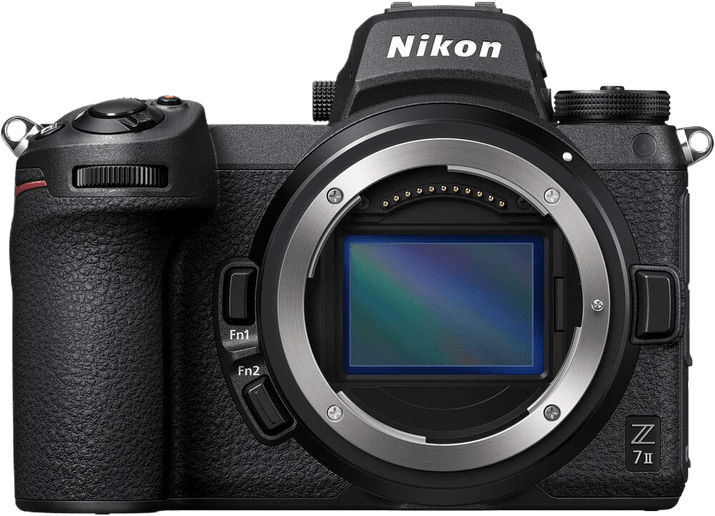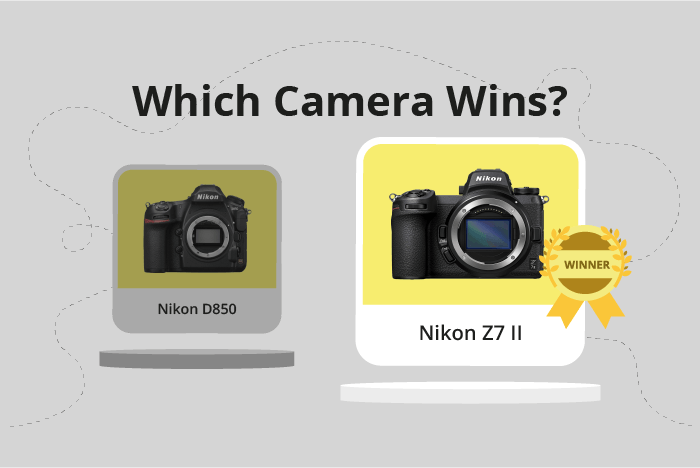Nikon D850 vs Z7 II Comparison
Nikon D850

Nikon Z7 II

The Nikon Z7 II edges out the Nikon D850 with a score of 85/100 compared to 82/100. Both cameras share similarities, such as being released by Nikon within three years of each other and having similar launch prices ($3300 for the D850 and $3399 for the Z7 II). However, the Z7 II has a more compact and lighter design, measuring 134 x 101 x 70mm and weighing 705g, making it easier to carry around.
On the other hand, the Nikon D850, a DSLR camera, has a slightly larger and heavier build at 146 x 124 x 79mm and 1005g. Despite its size, some photographers may prefer the D850 for its traditional DSLR feel and handling.
Considering the score, size, and weight, the Nikon Z7 II is the better option for those seeking a modern, portable camera. The Nikon D850, however, remains a solid choice for those who prefer a classic DSLR experience.
Nikon D850 vs Z7 II Overview and Optics
The Nikon Z7 II outperforms the Nikon D850 in optics, with a score of 86/100 compared to the D850’s 79/100. Both cameras share several specifications, including a 45.7-megapixel CMOS sensor, full-frame sensor size, and a DXOMARK score of 100 for the sensor. However, there are key differences that contribute to the Z7 II’s higher score.
The Z7 II boasts a faster shooting speed of 10 frames per second (fps), compared to the D850’s 7 fps. This advantage allows for capturing fast-moving subjects with greater ease and precision. Additionally, the Z7 II features a dual Expeed 6 processor, providing improved performance and image processing capabilities over the D850’s single Expeed 5 processor. The lens mount on the Z7 II is the newer Nikon Z mount, which offers a wider range of compatible lenses and better adaptability to future lens technology.
One significant advantage of the Z7 II is its built-in image stabilisation, which the D850 lacks. This feature allows for sharper images and improved low-light performance, as it compensates for camera shake during handheld shooting.
The D850, on the other hand, uses the established Nikon F FX lens mount. This provides access to a vast selection of lenses, many of which are more affordable than their Nikon Z counterparts. However, this advantage is not enough to outweigh the benefits of the Z7 II’s superior optics performance.
The Nikon Z7 II’s faster shooting speed, dual Expeed 6 processor, newer lens mount, and built-in image stabilisation make it the clear winner in terms of optics. While the D850 has the advantage of a wider range of affordable lenses, the Z7 II offers improved performance and future adaptability, solidifying its position as the superior camera in this comparison.
Nikon D850 vs Z7 II Video Performance
The Nikon Z7 II outperforms the Nikon D850 in video capabilities, with a video score of 91/100 compared to the D850’s 70/100. Both cameras share some common video specifications, such as a maximum video resolution of 4K and maximum video dimensions of 3840 x 2160. Additionally, both cameras have built-in time-lapse functionality.
The Z7 II’s superior video performance comes from its higher maximum video frame rate of 120fps, which is four times higher than the D850’s 30fps. This allows the Z7 II to capture smoother slow-motion footage and provide more versatility for videographers. The higher frame rate also enables better performance in low light conditions, as it reduces motion blur and provides clearer images.
While the D850 does not offer any significant advantages over the Z7 II in terms of video capabilities, it is worth noting that its lower score does not necessarily imply a lack of quality. The D850 still produces high-quality 4K video at 30fps, which is suitable for most videography needs. However, its limitations in frame rate and low light performance make it less versatile than the Z7 II.
Considering the video capabilities of both cameras, the Nikon Z7 II is the clear winner due to its higher video score and superior performance in frame rate and low light conditions. The Nikon D850, while not as versatile, still provides satisfactory video quality for most users. Ultimately, the choice between these two cameras depends on the individual needs and priorities of the videographer.
Nikon D850 vs Z7 II Features and Benefits
The Nikon D850 and Nikon Z7 II both have a feature score of 87/100, making them equally strong contenders in terms of their features.
Both cameras share several specifications, such as a 3.2-inch screen size, touchscreen capabilities, Wi-Fi, and Bluetooth. Neither camera has GPS functionality. These common specifications make both cameras versatile and user-friendly.
The Nikon D850 surpasses the Z7 II in screen resolution, boasting 2,359,000 dots compared to the 2,100,000 dots of the Z7 II. This higher screen resolution allows for clearer and more detailed image previews on the D850, enhancing the overall shooting experience.
On the other hand, the Nikon Z7 II has a flip screen, which the D850 lacks. This flip screen offers greater flexibility when composing shots at different angles and is particularly useful for vlogging or capturing selfies. This added functionality gives the Z7 II an edge in terms of adaptability and convenience.
While both cameras excel in various aspects, the Nikon D850 stands out for its superior screen resolution, providing a better image preview experience. The Nikon Z7 II, however, offers greater flexibility with its flip screen, making it more adaptable to different shooting scenarios. Ultimately, the choice between these two cameras depends on the individual photographer’s preferences and requirements, as both cameras showcase impressive features and strong performance.
Nikon D850 vs Z7 II Storage and Battery
The Nikon D850 outperforms the Nikon Z7 II in storage and battery, scoring 84/100 compared to the Z7 II’s 71/100. Both cameras have two memory card slots and support UHS-II compatible cards. The D850 accepts SD/SDHC/SDXC and XQD cards, while the Z7 II takes SD and CFexpress Type B/XQD cards.
The D850’s superior battery life of 1840 shots, using the EN-EL15a battery, is a significant advantage over the Z7 II’s 420 shots with its EN-EL15c battery. This difference makes the D850 more reliable for extended shooting sessions. However, the Z7 II has the benefit of USB charging, allowing for convenient charging options on the go.
Despite the Z7 II’s USB charging feature, the Nikon D850’s longer battery life and versatile memory card compatibility make it a stronger choice in terms of storage and battery capabilities.
Alternatives to the Nikon D850 and Z7 II
Are you still undecided about which camera is right for you? Have a look at these popular comparisons that feature the Nikon D850 or the Nikon Z7 II:

